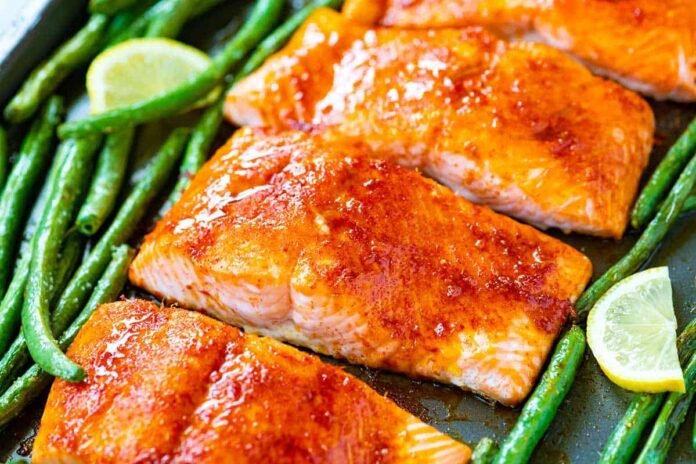I love cooking salmon in a variety of ways—whether it’s crafting flavorful salmon burgers with onion, garlic, mustard, and dill or enjoying a simple, elegant salmon fillet. With countless salmon recipes out there, I reached out to culinary experts for the best method to cook salmon fillets. Their unanimous recommendation? Pan-searing.
Why Pan-Searing is the Best Way to Cook Salmon
Expert chefs agree that pan-searing salmon fillets delivers a crispy, golden-brown crust while keeping the inside moist and flaky. As Chef Awada enthusiastically states, “I love to pan-sear salmon fillets.” Chef Jarmon adds, “The high heat quickly forms a delicious crust, locking in moisture,” and Chef Forciniti highlights that this technique “enhances the natural richness of the salmon and allows for great control over doneness.”
Step-by-Step Guide to Pan-Searing Salmon Fillets
- Preparation:
- Dry and Season: Pat the salmon dry with paper towels. Season generously with salt, pepper, or your favorite seasoning blend.
- Rest: Let the salmon sit at room temperature while you preheat your pan. This step ensures even cooking.
- Heating the Pan:
- Choose Your Oil: Use a high smoke point oil like avocado or olive oil. Some chefs recommend mixing olive oil with butter for added flavor.
- Preheat: Heat your stainless steel or cast iron skillet over medium-high heat until it’s hot.
- Cooking the Salmon:
- For Skin-On Fillets: Place the salmon skin-side down in the hot pan. Allow it to cook for several minutes until the skin becomes crispy.
- Flip and Finish: Flip the salmon and cook for another couple of minutes until the fillet reaches your desired internal temperature.
- Temperature Guide: Aim for 120-125°F for medium-rare or 130-135°F for medium. The USDA recommends 145°F for safety, but cooking to this temperature can result in drier fish.
- Monitoring:
- Avoid Overcooking: Keep a close eye on your salmon to prevent it from drying out and becoming tough. If your salmon sticks to the pan, give it a little more time to release naturally.
Skin-On vs. Skinless Salmon Fillets
The pan-searing technique works brilliantly for both skin-on and skinless salmon fillets:
- Skin-On Fillets: Start by searing the skin-side down to achieve that coveted crispy texture.
- Skinless Fillets: Use the same method, but be aware that skinless salmon cooks faster. If the fillet sticks to the pan, allow an extra minute for it to naturally release once it is properly browned.
Key Benefits of Pan-Seared Salmon
- Enhanced Flavor and Texture: The high heat creates a perfect crust, locking in moisture and intensifying the salmon’s natural flavors.
- Quick and Versatile: This method is ideal for a weeknight dinner or an elegant meal, whether you’re serving it as a standalone dish or using it as a topping for salads and bowls.
- Nutritional Value: Pan-seared salmon retains its high levels of omega-3 fatty acids, protein, and essential vitamins, making it a nutritious addition to any meal.
Conclusion
Pan-searing is the expert-preferred method for cooking salmon fillets, delivering a delightful combination of crispy skin, moist interior, and enhanced flavor. Whether you’re a seasoned cook or just beginning your journey with salmon recipes, following these step-by-step tips will help you achieve restaurant-quality results at home. Experiment with both skin-on and skinless fillets to find your perfect preparation, and enjoy a healthy, delicious meal every time.




